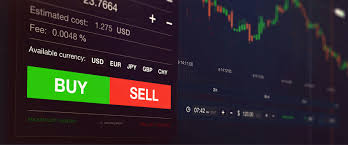
Revolutionizing Investment The Future of Automatic Forex Trading

In recent years, the realm of forex trading has witnessed a transformation with the advent of technology, leading to the rise of automatic forex trading latam-webtrading.com automatic forex trading systems. Traders and investors are increasingly leveraging algorithmic trading to enhance their strategies and manage risks more effectively. This article will delve into the key components of automatic forex trading, its advantages, potential pitfalls, and how to get started in this modern approach to currency trading.
What is Automatic Forex Trading?
Automatic forex trading, often referred to as algorithmic or automated trading, involves using software programs and algorithms to execute trades in the foreign exchange market. These systems use predefined criteria such as price movements, technical indicators, and market conditions to automate the trading process. Traders can set parameters for the software to follow, enabling it to identify and capitalize on trading opportunities without the need for constant monitoring.
The Benefits of Automatic Forex Trading
The rise of automatic forex trading offers numerous benefits that appeal to both novice and experienced traders:
1. Emotion-Free Trading
One of the most significant advantages of automated trading is the elimination of emotional decision-making. Traders can often fall prey to fear and greed, leading to impulsive decisions that result in losses. Automated systems follow their programmed strategies rigorously, ensuring trades are executed without emotional biases.
2. Backtesting Capabilities
Automated trading systems allow traders to test their strategies against historical data, a process known as backtesting. This functionality can help traders understand how their strategies would have performed in various market conditions, enabling better-informed decisions before deploying real capital.
3. 24/7 Market Access
Unlike manual trading, which is often limited by the trader’s availability, automated trading systems can operate 24/7. This means that traders can capture opportunities across different time zones and market sessions, maximizing their earning potential without continuously monitoring the market.
4. Consistency and Discipline
By adhering strictly to the programmed strategy, automated trading fosters discipline and consistency. This ensures that traders stick to their trading plans, reducing the likelihood of erratic performance due to market fluctuations or psychological factors.
Challenges of Automatic Forex Trading
Despite the advantages, automatic forex trading is not without its challenges. Here are some common pitfalls to be aware of:
1. Technical Failures
Automated trading systems rely on technology, and like any technology, they can encounter issues such as system crashes, internet interruptions, or data feed problems. Traders must have contingency plans in place to manage these risks.

2. Over-Optimization
Backtesting can lead to over-optimization, where a trader fine-tunes their strategy to perform perfectly in historical data. This can result in a strategy that is not viable in real-time trading conditions. It’s essential to ensure that a strategy is robust and adaptable to changing market dynamics.
3. Lack of Understanding
Many traders are drawn to automated systems with the false belief that they can simply “set and forget” them. However, a fundamental understanding of trading strategies, market conditions, and risk management is still crucial for success. Traders must remain engaged and informed about the market trends.
How to Get Started with Automatic Forex Trading
If you’re interested in exploring automatic forex trading, here are steps to help you get started:
1. Research and Choose a Trading Platform
Select a reputable trading platform that offers automated trading capabilities. Many brokers offer proprietary tools or support third-party systems that provide access to algorithmic trading functionalities.
2. Develop or Select a Trading Strategy
Identify your trading style and risk tolerance. You can either develop your trading strategy based on your research or select a pre-built strategy commonly available. Ensure that your chosen strategy aligns with your financial goals.
3. Backtest Your Strategy
Before implementing your strategy with real money, backtest it using historical data. This process will help you gauge the potential performance of your strategy in various market scenarios. Make adjustments if necessary.
4. Implement Risk Management Techniques
No trading strategy is complete without a solid risk management plan. Determine your position size, set stop-loss orders, and limit the amount of capital you are willing to risk on each trade.
5. Monitor and Adjust
Even though you are using an automated system, continuous monitoring is essential. Keep track of your system’s performance and make necessary adjustments to your strategy as the market evolves. Your success in automatic forex trading is not just about setting up a system but also about the ongoing evaluation and refinement.
Conclusion
Automatic forex trading has revolutionized the way traders approach the financial markets, allowing for more efficient, emotion-free trading experiences. However, like any trading method, it comes with its share of challenges. By understanding both the benefits and potential pitfalls, you can effectively utilize automated trading to enhance your forex trading strategy. Embrace the future of trading, and may your automated systems lead you to success!
